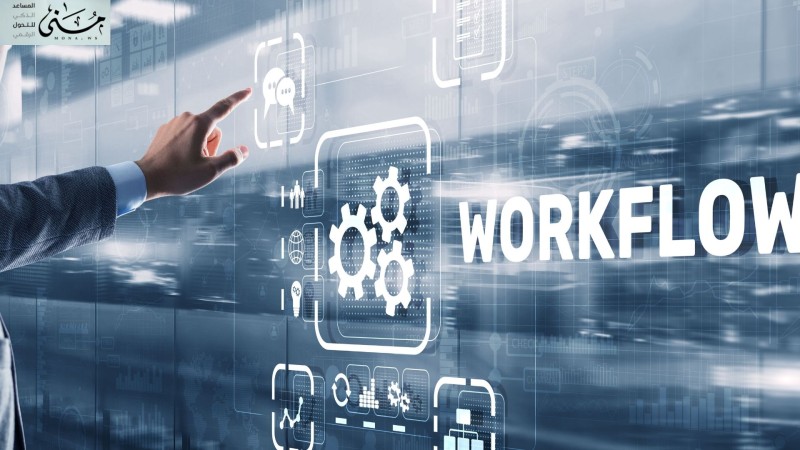In an era where corporate work demands the highest levels of accuracy, speed, and transparency, outgoing and incoming correspondence emerges as the primary focus of communication between official entities, government institutions, and private companies. With the increasing volume of daily transactions, there is an urgent need to transform these outgoing and incoming correspondence into an integrated digital system that ensures accurate documentation, organized archiving, and a timeline that is clear of confusion and manipulation.
That's why smart organizations are moving toward adopting advanced systems like DocSuite Communication, which offer an integrated model for managing incoming and outgoing correspondence in a way that ensures efficiency and quality at every step.
Continue reading the article to learn more about outgoing correspondence.
Why are incoming and outgoing correspondence the core of corporate work?
Incoming and outgoing correspondence represents the backbone of any administrative system. It is the official tool for exchanging information, documenting procedures, and following up on decisions. When this correspondence is disorganized or managed manually, organizations lose the ability to track the progress of transactions, and they become vulnerable to loss, delay, or even forgery. Therefore, controlling incoming and outgoing correspondence according to an intelligent system creates a consistent and organized work environment.
Traditional challenges in paper correspondence
There are several challenges in paper correspondence, namely:
Lost and Untraceable MessagesPaper correspondence can be lost or delayed, disrupting vital decisions.
Lack of chronology and immediate documentationIt is difficult to prove exactly when a particular communication was sent or received.
Cost of printing, transportation, and paper archivingEvery manual messaging process costs time, money and space.
For organizations to successfully keep pace with digital transformation, incoming and outgoing correspondence must be managed through a unified platform that combines speed, accuracy, centralized documentation, and mail archiving, all linked to an intelligent and interactive ECM system.
Digital methodology for managing incoming and outgoing correspondence
The shift to digital correspondence management doesn't just mean moving from paper to screen. It also means adopting an integrated approach that controls the flow of each transaction from the moment it is received to the moment it is archived. This approach includes:
- Automatic coding and classification
The system encodes each incoming or outgoing correspondence with a unique code that identifies the type of transaction, its destination, and its date, allowing it to be retrieved at any time, without the need to manually search through files.
- Automated chronology
All incoming and outgoing correspondence is recorded in a timeline that shows its complete path: from sender, to recipient, to departments responsible for follow-up or response, preventing duplication or loss.
- Integration with external parties and internal systems
By integrating DocSuite Communication with government communications systems such as Messer, the organization can send and receive outgoing and incoming correspondence directly without an intermediary, while ensuring full legal documentation.
- Instant notifications and follow-up tasks
Automatic notifications are sent to relevant employees when new correspondence is received or when a response is due, enhancing the discipline of tracking incoming and outgoing correspondence.
What do organizations achieve from intelligent management of incoming and outgoing correspondence?
When an organization adopts an integrated digital system to manage incoming and outgoing correspondence, the positive impact extends beyond speed and organization, but also extends to strategic outcomes that touch on governance, transparency, and improved work environment. With the use of professional systems like DocSuite Communication, these benefits become tangible on the ground and are reflected at all administrative and technical levels within the organization.
The most important benefits of incoming and outgoing correspondence are as follows:
- Transparency and accountability
With a documented digital record of every outgoing or incoming correspondence, it becomes easy to know who sent what, when, to whom, and what action was taken. This complete documentation prevents personal judgment and holds each employee strictly accountable.
🔹 Example: When a response to an official letter is delayed, the system can be reviewed to determine who is responsible for the delay and the actual time taken for each internal procedure.
- Speed up decision making
Traditional correspondence management relies on paper transactions that can take days to reach the relevant parties, while digital management allows information to be delivered instantly, which helps accelerate decision-making and improve the efficiency of corporate operations.
🔹 Example: A department manager can approve a correspondence from their mobile device, without having to wait for it to be delivered via paper bag.
- Reducing human error and duplication
Intelligent systems like DocSuite prevent the same outgoing or incoming correspondence from being logged twice, routed to the wrong department, or lost between departments, thanks to database integration and automatic categorization.
🔹 Example: The system automatically rejects correspondence with a duplicate outgoing number, preventing file overlap.
- Facilitate reporting and analysis
Senior management can generate monthly or quarterly reports showing the number of outgoing and incoming correspondence, average response time, and the performance of various departments in handling official communications.
🔹 Example: A DocSuite report reveals that HR is taking 4 extra days to respond to correspondence, requiring administrative intervention.
- Compliance and Internal Control Support
Having a secure, centralized record of all incoming and outgoing correspondence makes it easier for audit teams or regulatory authorities to review all transactions without having to dig through physical archives.
🔹 Example: When the Audit Bureau requests a report on contract letters, it can be retrieved from the system within minutes.
How is smart management of incoming and outgoing correspondence applied in practice?
Implementing smart management of all incoming and outgoing correspondence doesn't necessarily require radical changes. It does require a clear methodology, modern technical tools like DocSuite Communication, and, most importantly, an internal commitment to organizational change. The following are the key steps and factors that ensure the success of this practical transformation:
- Identify and classify types of correspondence
The first step is to prepare a clear list of all types of incoming and outgoing correspondence that the organization handles, whether official, internal circulars, announcements, or external letters. Then, categorize them based on the sender or recipient, the degree of importance, and the content.
🔹 Smart classification allows correspondence to be automatically directed to the relevant department without human intervention, reducing time wastage.
- Transaction Lifecycle Design
Every communication must have a "transaction lifecycle," from the moment it is received or sent, until it is saved or archived. This includes stages such as: creation, review, signing, routing, execution, and follow-up.
🔹 With DocSuite, dynamic pipelines can be designed for each type of correspondence, enhancing process transparency.
- Linking with digital signature and corporate identity
For incoming and outgoing correspondence management to be truly effective, it must be directly linked to an organization's approved digital signature system, which legalizes documents and provides electronic security.
🔹 Each outgoing letter contains a unique digital identifier that links the user, date, content, and recipient.
- Training and cultural change within the organization
Even the most powerful technical systems fail without a supportive organizational culture. Therefore, it is important to train all employees on the new system, explain its benefits, and link it to achieving personal and organizational goals.
🔹 An employee who realizes that the system protects him from errors and documents his work will be more cooperative in using it.
- Continuous evaluation and performance development
After the system is operational, performance should be continuously monitored through KPI dashboards provided by systems like DocSuite, and then the processes should be adjusted and streamlined based on feedback.
🔹 If it turns out that the engagement letters go through five unnecessary stages, they can be combined into two stages to achieve speed.
In light of the rapid changes taking place in the contemporary work environment, incoming and outgoing correspondence is no longer merely documents passed between entities. Rather, it has become a fundamental axis for measuring the efficiency of institutional performance and the effectiveness of internal and external communication. With the increasing volume of data and communications and the diversity of channels, it is no longer possible to rely on manual methods or fragmented solutions. Rather, there is an urgent need to implement a smart, integrated methodology based on digital documentation, information flow, and continuous monitoring of the course of each transaction.
 تعرف في هذا المقال على الإدارة الذكية لجميع المراسلات الصادرة: منهجية متكاملة
تعرف في هذا المقال على الإدارة الذكية لجميع المراسلات الصادرة: منهجية متكاملة










Comments
Add New Comment